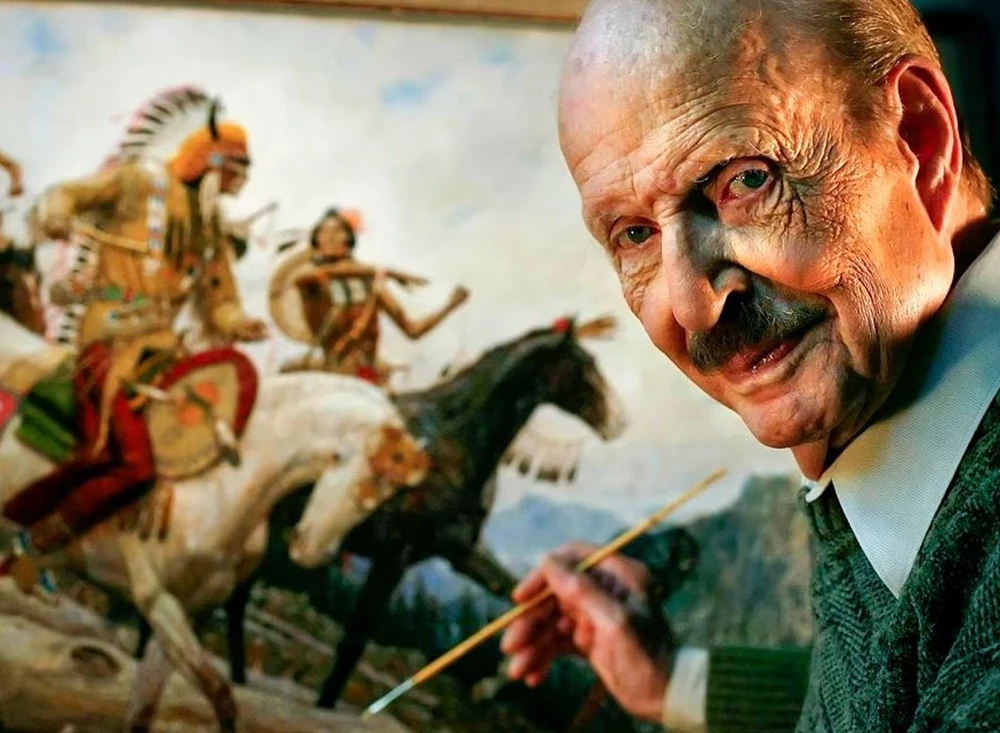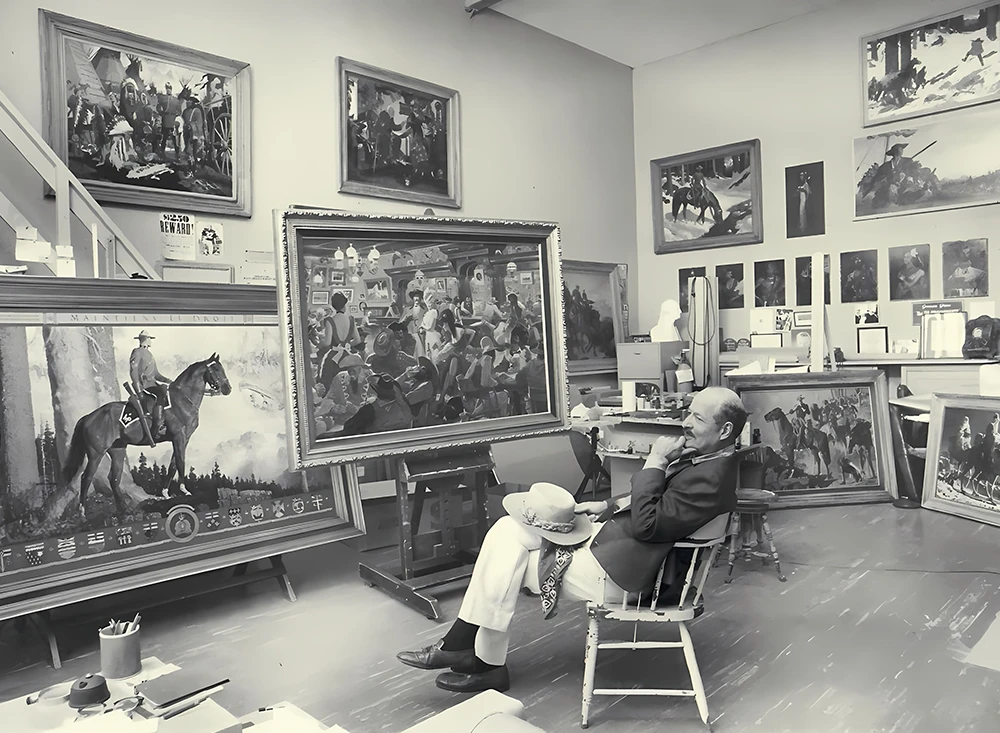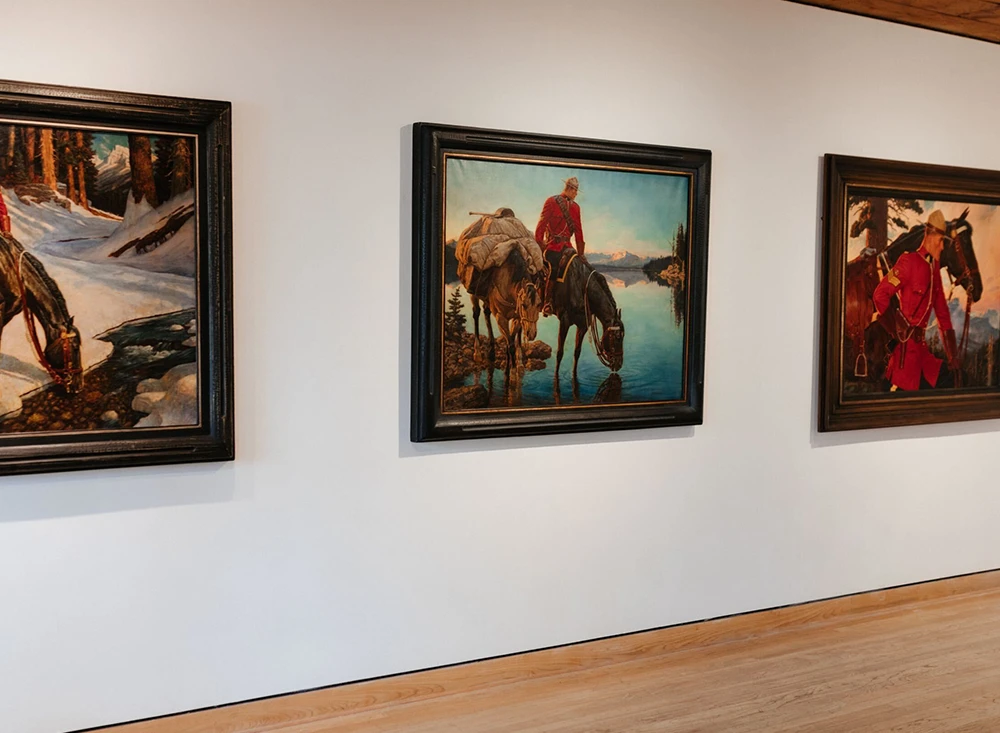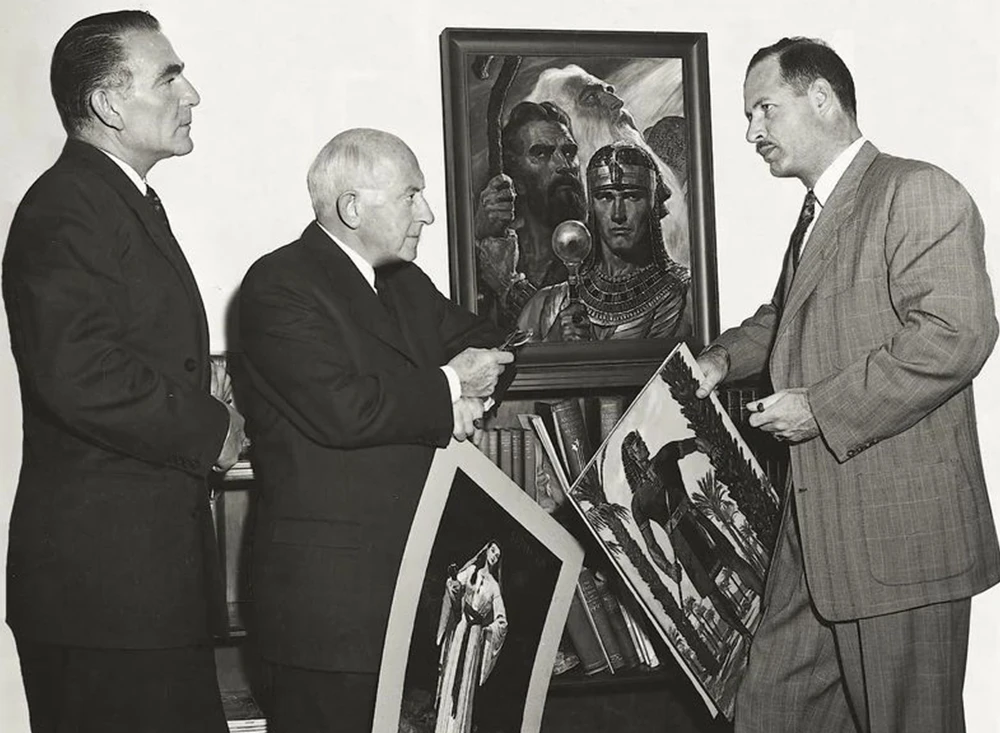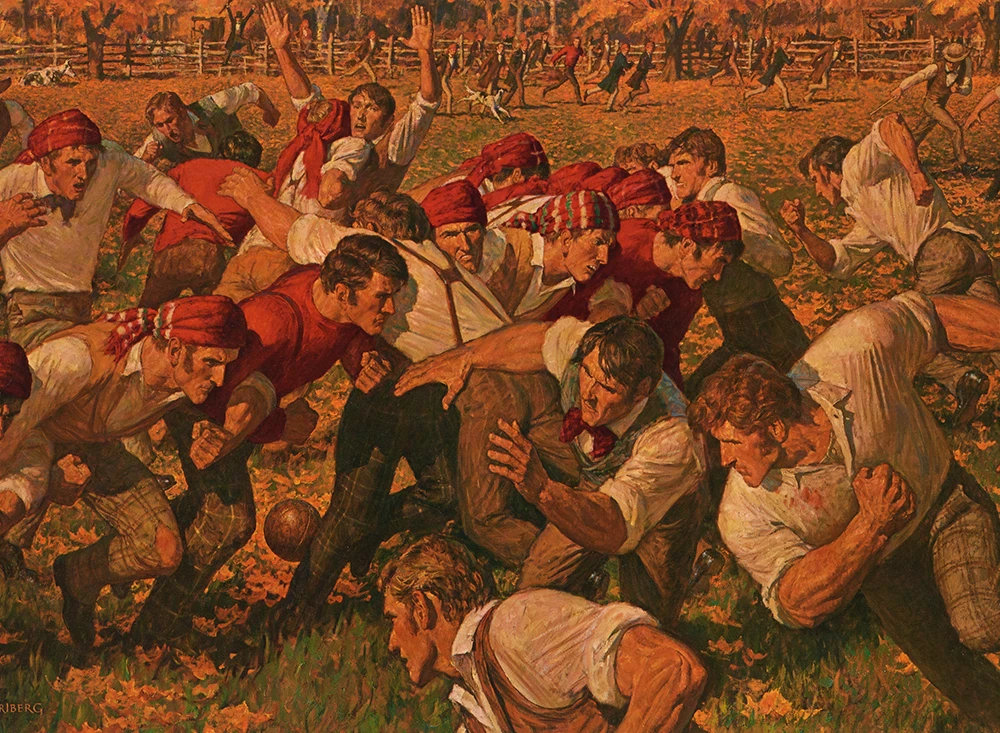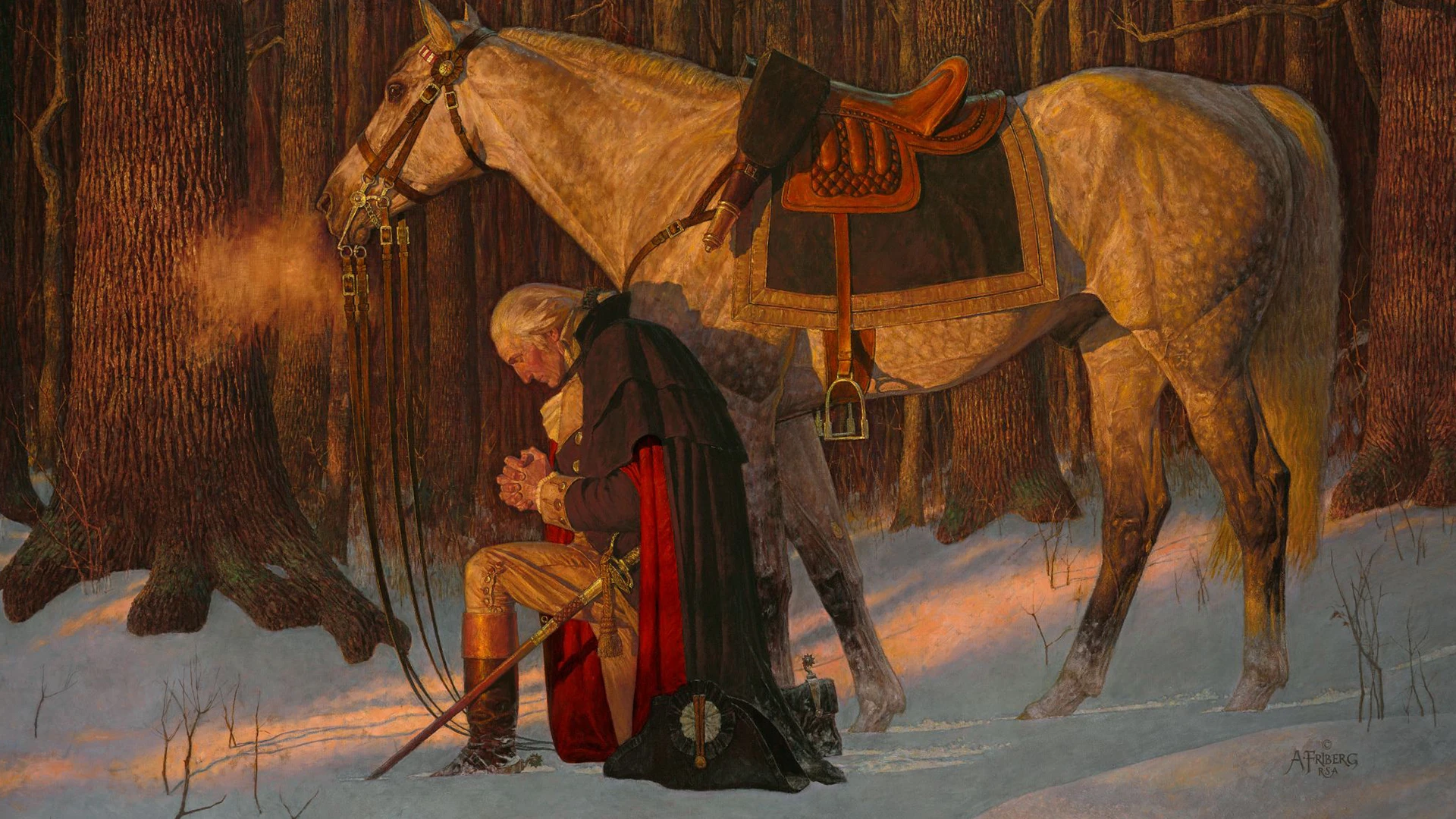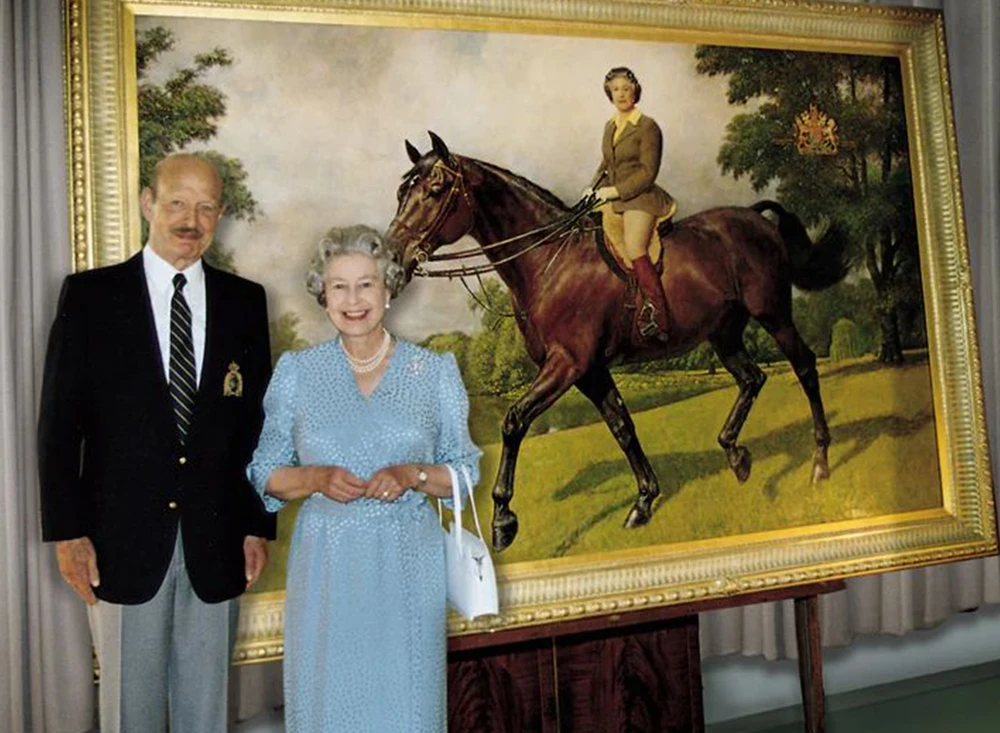“I love the simple, forthright, natural approach to art – I have no purpose but to tell a story and to tell it as well and as eloquently as I can.”
- Arnold Friberg
Arnold Friberg’s legacy as a visual historian is a testament to the power of art to inspire, teach, and preserve meaningful moments. His paintings remain a source of inspiration and admiration, inviting us to explore the depths of history, the beauty of the natural world, and the indomitable spirit of humanity. From the sacred halls of history to the glamorous world of Hollywood to the elegance of Buckingham Palace, Friberg’s professional career is a remarkable story of blessing, talent, and resolve.
